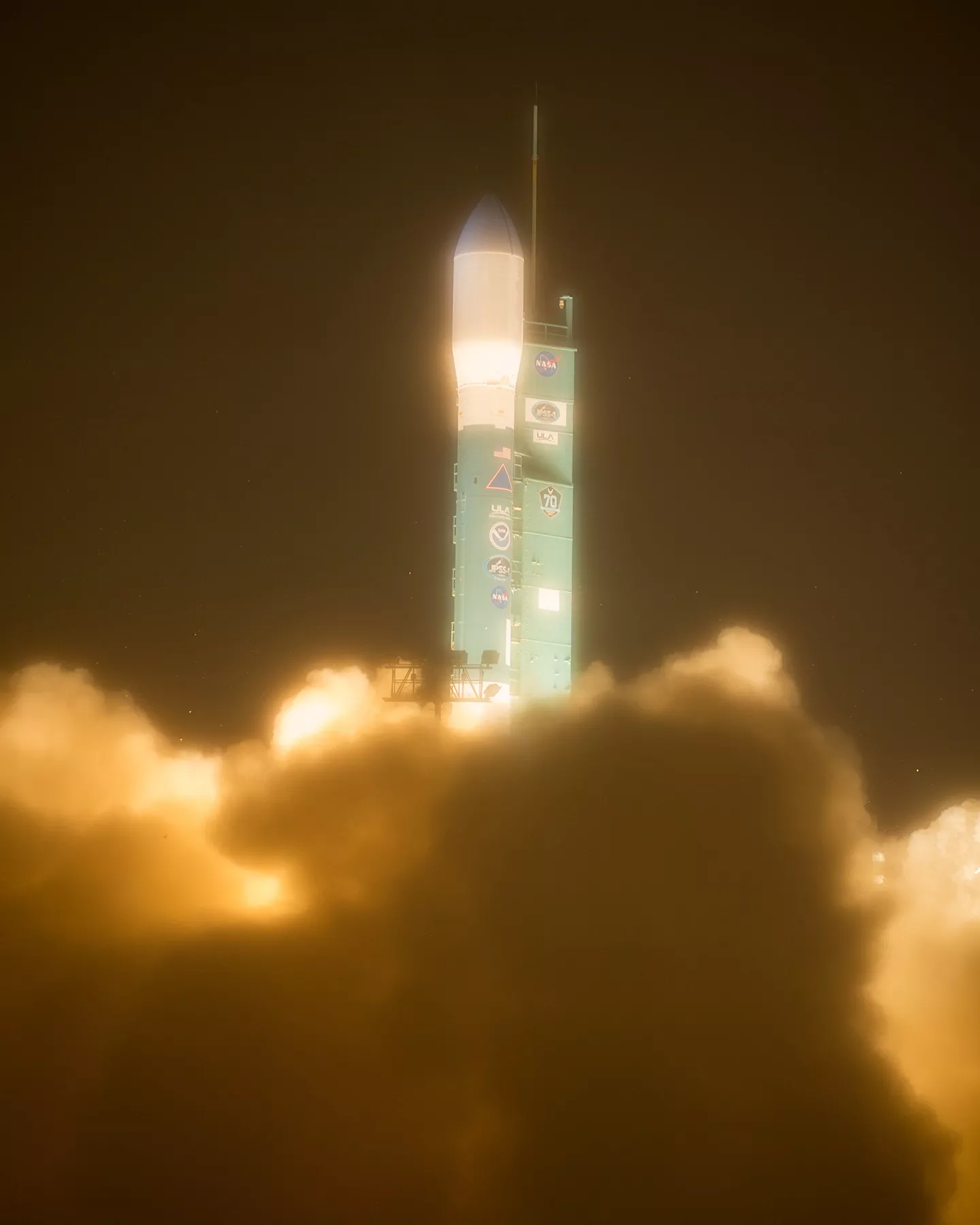
The Joint Polar Satellite System-1, the first in a new series of four highly advanced NOAA polar-orbiting satellites, lifted off from Vandenberg Air Force Base, California, at 1:47 a.m. PST this morning. The satellite's next-generation technology will help improve the timeliness and accuracy of U.S. weather forecasts three to seven days out.
"The value of the new JPSS satellite cannot be understated after this tragic hurricane season," said Secretary of Commerce Wilbur Ross. "JPSS offers an unparalleled perspective on our planet's weather, granting NOAA advanced insights which will be used to guard American lives and communities."
JPSS-1 will be renamed NOAA-20 when it reaches its final orbit. Scientists and forecasters will be able to use the satellite's data officially after its five advanced instruments, all significantly upgraded from those on NOAA's previous polar-orbiting satellites, complete three months of tests. The satellite is designed to operate for seven years, with the potential for several more years.
"This year's hurricane and fire seasons demonstrated just how critical NOAA's Earth observing satellites are for forecasting extreme weather and hazardous events," said Rear Admiral Timothy Gallaudet, Ph.D., acting NOAA administrator. "JPSS joins the recently launched GOES-16 satellite to provide forecasters unprecedented access to high quality data needed for accurate forecasts, which save lives, protects property and safeguards our economic livelihood."
The data these advanced instruments provide will improve weather forecasting, such as predicting a hurricane's track, and aid in the recognition of climate patterns that can influence the weather, including El Nino and La Nina. They will also help emergency managers respond to events like wildfires and volcanic eruptions and help communities, recovering from severe storms, with better views of storm damage and show the extent of power outages. The data also will be available to aid scientists monitor changes in our environment.
"Building and launching JPSS-1 underscores NOAA's commitment to putting the most scientifically advanced satellites as possible into orbit, giving our forecasters — and the public — greater confidence in weather forecasts up to seven days in advance, including the potential for severe or dangerous weather," said Stephen Volz, Ph.D., director of NOAA's Satellite and Information Service.
JPSS-1 will join the NOAA/NASA Suomi NPP satellite in the same polar orbit, and will also provide scientists with observations of atmospheric temperature and moisture, clouds, sea-surface temperature, ocean color, sea ice cover, volcanic ash, and fire detection.
"Emergency managers increasingly rely on our forecasts to make critical decisions and take appropriate action before a storm hits," said Louis W. Uccellini, director of NOAA's National Weather Service. "Polar satellite observations not only help us monitor and collect information about current weather systems, but they provide data to feed into our weather forecast models."
Together, NOAA and NASA oversee the development, launch, testing and operation all the satellites in the JPSS program. NOAA funds and manages the program, operations and data products. On behalf of NOAA, NASA develops and builds the instruments, spacecraft and ground system and launches the satellites which then NOAA takes over to operate.
"Today's launch is the latest example of the strong relationship between NASA and NOAA, contributing to the advancement of scientific discovery and the improvement of the U.S. weather forecasting capability by leveraging the unique vantage point of space to benefit and protect humankind," said Sandra Smalley, director, NASA's Joint Agency Satellite Division.
Ball Aerospace designed and built the JPSS-1 satellite bus and Ozone Mapping and Profiler Suite instrument, integrated all five of the spacecraft's instruments and performed satellite-level testing and launch support. Raytheon Corporation built the Visible Infrared Imaging Radiometer Suite and the Common Ground System. Harris Corporation built the Cross-track Infrared Sounder. Northrop Grumman Aerospace Systems built the Advanced Technology Microwave Sounder and the Clouds and the Earth's Radiant Energy System instrument.
More information on JPSS-1.
